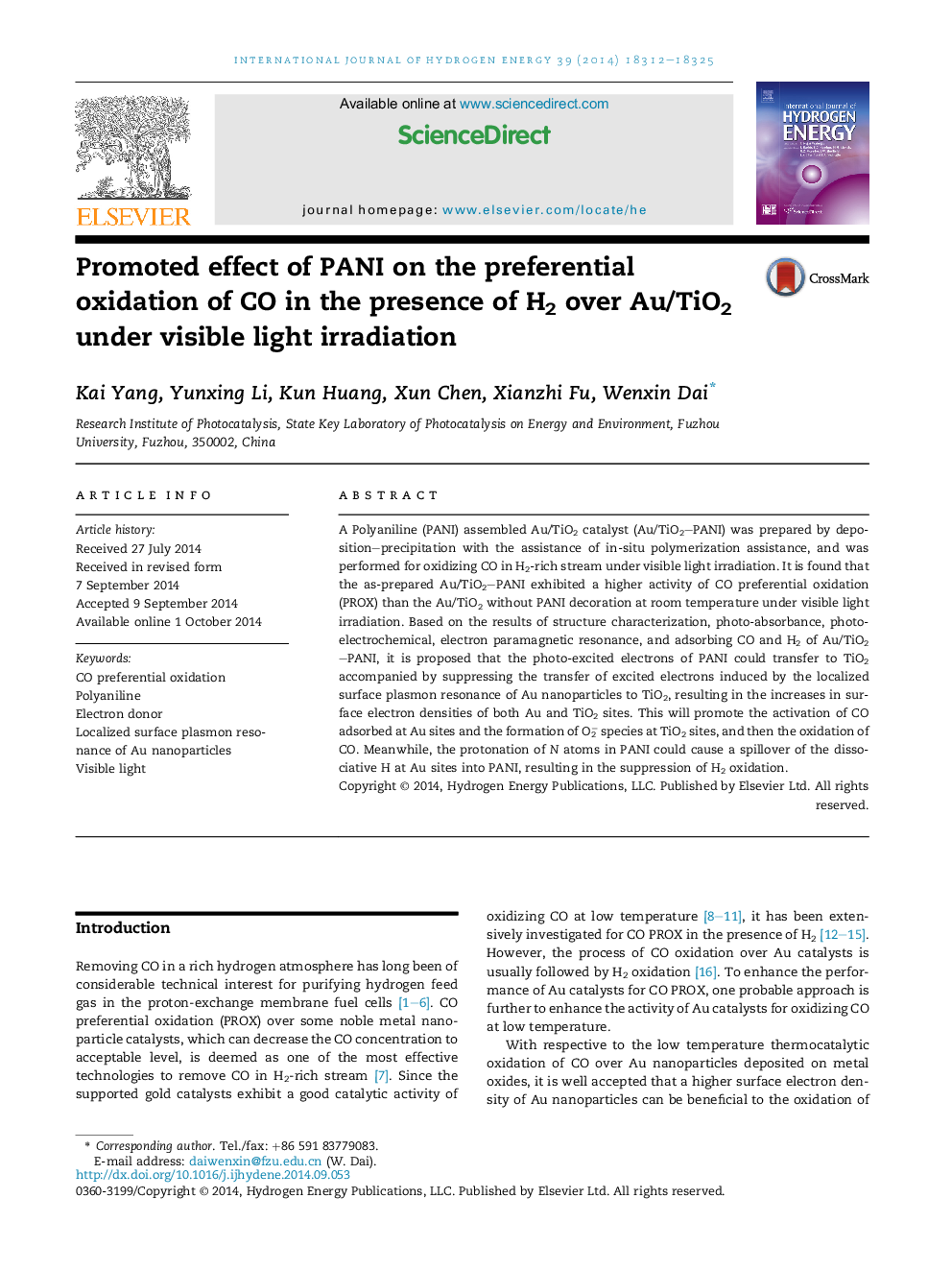| Article ID | Journal | Published Year | Pages | File Type |
|---|---|---|---|---|
| 1280841 | International Journal of Hydrogen Energy | 2014 | 14 Pages |
•PANI promotes CO PROX over Au/TiO2 under visible light irradiation or not.•PANI acts as an electron donor due to the electron excitation from π to π∗ orbit induced by visible light.•Electron transfer from PANI to Au and TiO2 results in the activations of CO and O2.•Protonations of N atoms in PANI cause a spillover of the dissociative H at Au sites into PANI.•LSPR effect of Au nanoparticles can be coupled with the electron donor effect of PANI.
A Polyaniline (PANI) assembled Au/TiO2 catalyst (Au/TiO2–PANI) was prepared by deposition–precipitation with the assistance of in-situ polymerization assistance, and was performed for oxidizing CO in H2-rich stream under visible light irradiation. It is found that the as-prepared Au/TiO2–PANI exhibited a higher activity of CO preferential oxidation (PROX) than the Au/TiO2 without PANI decoration at room temperature under visible light irradiation. Based on the results of structure characterization, photo-absorbance, photo-electrochemical, electron paramagnetic resonance, and adsorbing CO and H2 of Au/TiO2–PANI, it is proposed that the photo-excited electrons of PANI could transfer to TiO2 accompanied by suppressing the transfer of excited electrons induced by the localized surface plasmon resonance of Au nanoparticles to TiO2, resulting in the increases in surface electron densities of both Au and TiO2 sites. This will promote the activation of CO adsorbed at Au sites and the formation of O2− species at TiO2 sites, and then the oxidation of CO. Meanwhile, the protonation of N atoms in PANI could cause a spillover of the dissociative H at Au sites into PANI, resulting in the suppression of H2 oxidation.
Graphical abstractA probable process of Au/TiO2–PANI for CO PROX under visible light irradiation: PANI, as an electron donor induced by the electron transfer from π to π∗ orbit of benzenoid and quinonoid units conjugated with N atoms under visible light irradiation, donates electrons to TiO2 and Au surfaces, resulting in the increase in surface electron densities of both TiO2 and Au sites and then the promotion of CO oxidation. Meanwhile, the protonation of N atoms in PANI will cause a spillover of the dissociative H at Au sites into PANI, resulting in the suppression of H2 oxidation.Figure optionsDownload full-size imageDownload as PowerPoint slide
